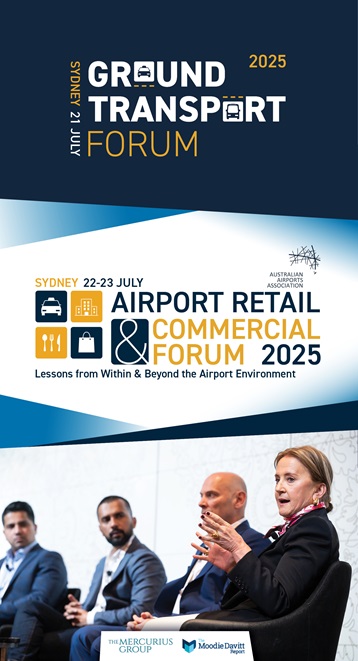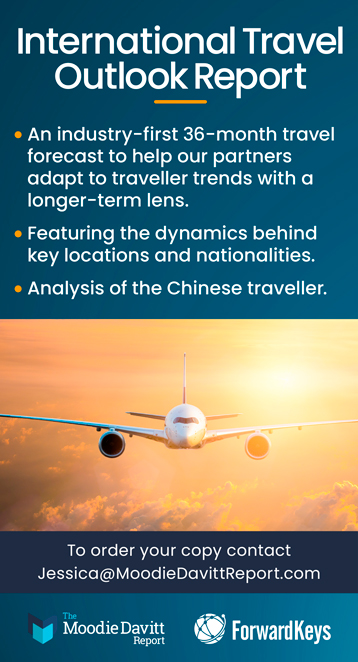Digital and mobile technology is changing the way passengers travel through airports and how they engage with their surroundings. International location-based marketing specialist PSI outlines the challenges and opportunities these developments present to advertising approaches across these environments.
There’s a lot of debate in the aviation industry recently about who owns the ‘end to end’ passenger experience. But the real question should be: How can travel operators and brands best work together to enhance the overall experience for passengers in a more personalised and streamlined way?
This compelling video tells how PSI created and implemented a powerful campaign to communicate Johnnie Walker Black Label’s new brand identity at London Heathrow Airport – and beyond. This ambitious multi-touchpoint strategy targeted travellers before they reached the airport and even once they boarded their planes, through an array of transit, airport, airline and digital/social media options. The impact was extraordinary.
Gone are the days of passengers having to carry laminated folders containing multiple copies of their airline, car rental, hotel booking and related travel documents.
Digital has revolutionised the way that consumers navigate their journeys. Mobile has gone from being a communication accessory to an integral part of the travel experience.
Technology offers the opportunity for more streamlined and personalised passenger engagement – from chatbots and electronic baggage tags to beacons and biometric tokens. PSI’s OCS research reveals that 76% of travellers use their mobile phones or tablets while travelling through the airport.
This new digital frontier has given rise to more travel providers vying for consumer attention at different stages of their journey, which in turn is opening new enhanced media touchpoints. But this can make the experience feel more fragmented and disjointed at a time where there are increased opportunities to make travel more seamless and connected.
This is best observed in the mobile app space, where travel operators and digital disruptors are developing applications that seem to address and digitalise a service for any and all parts of the passenger journey. But very few provide an overarching, scalable one-stop-shop solution for significant parts of the journey.
This in turn has led to the big problem of travel app churn – among normal mobile app users, 25% abandon apps after one use – and brands struggle to retain users after their travel purpose has been served.
Major players in this space such as TripAdvisor, Airbnb and Google Trips have identified the opportunity to leverage their strengths and reputation in certain areas of the journey to diversify and expand their offering across a wider section in a bid to offer an enhanced solution across the entire end-to-end journey.
[Flio, which claims to be the world’s most-used app for airports in the world, offers a centralised solution, attempting to help airport passengers during their journey while generating commercial revenues for airports, brands and retailers. -Ed]
Aiming at a moving target
A truly connected experience cannot ignore the premium broadcast and passenger engagement role that more traditional OOH formats can play in the airport environment. Coupled with digitalisation and new technologies in the travel space, retailers and brands are seeing increased opportunities in extending their engagement and reach with passengers outside the traditional bricks and mortar of the retail space.
New digital touchpoints and more enhanced data capture methods are allowing brands to leverage insights and analytics to build up more complete profiles of their passenger audiences, ultimately leading to more effective communication. Geolocation and beacon technology, still in its nascent stages within the airport community, allows for enhanced targeting, enabling segmentation of passengers by language and country and tailoring of messaging to the specific area of the terminal they find themselves in.
One of our campaigns took a targeted approach to deliver tailored messaging to British Airways passengers who were due to fly out of Heathrow Airport. They received messages prior to their arrival at the airport via display on BA.com. This communication was further supported with premium digital OOH media within Heathrow’s British Airways lounges as well as a presence onboard through British Airways’ inflight magazine, in selected cabins across routes.
Leveraging PSI’s long-standing partnership with JCDecaux Airport, we activated a dominating OOH campaign across the airport. An audience impression-based buy on certain digital networks within Heathrow ensured limited wastage and delivery of the right message to the right audience.
Using real-time flight data, we were able to ensure that our messaging would only be served on digital gate room panels to passengers flying to destinations of interest.
In addition, multiple creative and copy options were A/B tested to prevent audience ad fatigue. Mixed media carousels were also tested, which achieved a positive uplift.
“China has shifted to virtual forms of payment faster than any other market and 87% of people in China already pay via third-party mobile payment systems like Alipay and WeChat Pay, both of which are beginning to set up shop in popular global tourist destinations.”
Historically, the ability to measure effectiveness across the journey has been limited. Effective measurement was a key requirement for this campaign in order to demonstrate the full value of advertising in the travel corridor.
A new full measurement solution that would assess the campaign’s impact on brand metrics through consumer research and business metrics through sales, spend and passenger data analysis was created.
This two-stage approach to measurement utilised both hard and soft metrics and was the first time such ‘Travel Sales Effectiveness Measurement’ was employed.
Non-travel and travel retail brands are starting to take note of the targeted opportunities available as a result of this new travel landscape and see the opportunities.
Despite the numerous possibilities that a digitalised travel environment has provided, navigating relevant data and technological travel opportunities can seem overwhelming, with many brands yet to take full advantage of a clear end-to-end communication strategy. A significant contributor to this is that airports are hugely complex environments – architecturally, operationally and demographically. Their audiences are multi-national, multi-cultural and multi-lingual, making targeting as difficult as it is vital.
According to SITA’s Passenger IT Insights 2019 report, by the end of 2021 45% of airports will deliver flight and gate information onto mobile with alerts. Additionally, 44% will show the route to the gate, check-in desk and lounge; 48% will show the walk time to the gate; 52% will show food & beverage offers; and 58% the route to car park and car rental pick-up.
Factor in other technological advances such as Artificial Intelligence (AI) – key to areas such as predictive analytics, virtual agents and chatbots; personalised/targeted advertising; brand perception tracking and pattern recognition; and blockchain – and it’s clear that the future of digital and mobile technology in airports is brimming with excitement and opportunity.
Box-out Helping airport operators and travel retailers to sleep at night PSI Managing Director James McEwan looks at the impact of WeChat and other mobile-enabled technologies. “I believe a lot of airport operators and duty free retailers are being kept awake at the moment regarding digital media technologies such as C-Trip and WeChat, in terms of how passenger engagement with these is evolving and how these can be best-harnessed throughout journey stages, to then influence retail. “For example, WeChat’s seamless interface across many of the most popular Chinese apps includes those offering travel-related services. This all-in-one capability – messaging, commerce and payment – makes WeChat a game-changing platform, especially given that it is accessed by over 938 million active users. “Once users have booked travel through the platform, WeChat sends them an invitation to agroup chat facility, enabling communication and sharing between those heading to the same destinations. “The opportunity for advertisers to participate in these forums is prime. Furthermore, WeChat’s WeShake functionality allows advertisers to transfer additional content to these audiences, through a simple ‘shake’ interaction with beacon-enabled OOH formats along their travel corridor. “China has shifted to virtual forms of payment faster than any other market and 87% of people in China already pay via third-party mobile payment systems like Alipay and WeChat Pay, both of which are beginning to set up shop in popular global tourist destinations. Furthermore, Global Blue customers can now receive their tax refunds directly to their Alipay wallets on mobile devices.” |
About PSI
PSI specialises in planning global location and travel OOH solutions. It achieves this through close collaboration with its 34 local network offices around the world, plus using its centralised expertise as the largest agency purchaser of airport inventory internationally. This enables PSI to provide unrivalled solutions across markets for its client base.
Underpinning this offering is its Global Travel Corridor strategy, following entire passenger journeys and enabling PSI to deliver unique campaign solutions during the travel preparation phase, navigation through travel hubs, and subsequent arrival in global urban centres.
NOTE: This partner content first appeared in Sight Lines, a new bi-monthly publication dedicated to airport advertising. If you would like to take part in Sight Lines, please contact Martin Moodie (Martin@MoodieDavittReport.com) and Liam Coleman (Liam@MoodieDavittReport.com) for editorial and Irene Revilla for advertising and sponsorship (Irene@MoodieDavittReport.com).

















